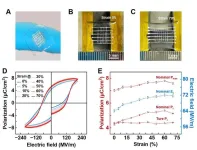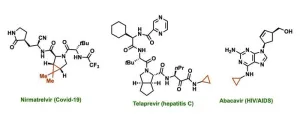(Press-News.org) AUGUST 3, 2023, NEW YORK – A Ludwig Cancer Research study has identified a pair of genes whose expression by a type of immune cell within tumors is predictive of outcomes for cancer patients and is linked to a vast network of gene expression programs, engaged by multiple cell types in the tumor microenvironment, that control human cancers.
Researchers led by Ludwig Lausanne’s Mikaël Pittet report in the current issue of Science that patients with higher expression of the gene CXCL9 in their tumor-associated macrophages had far better clinical outcomes than those with higher expression of a gene named SPP1 by the immune cells. Macrophages expressing the former gene, they show, are invariably poised to attack cancer cells, while those expressing SPP1 are in a state supportive of tumor growth. Most intriguing, however, is the discovery that when the ratio of CXCL9 to SPP1 is high in the tumor microenvironment (TME), gene expression programs in other TME cells indicate a similarly anti-tumor slant; a low CS ratio, on the other hand, invariably accompanies pro-tumor gene expression signatures across the TME.
“We were very surprised to find that just this one parameter—the ratio of two genes primarily expressed by macrophages—could tell us so much else about the tumor,” said Pittet. “This is true for multiple types of solid tumors. It means that, despite their enormous complexity, the microenvironments of tumors are governed by a clear set of rules. We have described one of them in this study.”
With further validation in prospective clinical studies, Pittet noted, the CS ratio could be an easily measured molecular marker of likely patient prognosis and a useful tool for the management of therapy. Beyond that, the networks of linked gene expression signatures across cell types identified by the study expose several potential molecular targets for the development of drugs that might tip the TME into a state more susceptible to treatments like immunotherapy.
Noncancerous cells of the TME play a critical role in the growth and viability of tumors. These include fibroblasts, which churn out the molecular filler of tissues, endothelial cells that build blood vessels, epithelial cells that line body cavities and a menagerie of immune cell species that variously help or hinder tumor growth. The possibility of targeting these cells to treat cancers is tantalizing because, unlike malignant cells, they do not mutate rapidly and are thus unlikely to evolve resistance to therapies.
Pittet and his colleagues were interested in how much the TME varies between tumors. To find out, they conducted an unbiased analysis of 52 primary and metastatic tumors from 51 patients with head and neck cancers, examining how global gene expression captured in individual cells but statistically analyzed across tumors as a whole corresponded to patient outcomes.
This approach identified CXCL9 and SPP1—whose expression is mutually exclusive in individual macrophages—as being tightly linked to prognosis, and this turned out to be true for other solid cancers as well. The expression of the two genes, Pittet and colleagues show, is also more categorically associated with the anti-tumor or pro-tumor “polarity” of macrophages than currently used markers.
Notably, the ratio of CXCL9 and SPP1 expression (termed CShi or CSlow) was broadly consistent with the state of other types of TME cells in head and neck tumors and with several phenomena associated with pro- and anti-tumor effects. CShi tumors, for example, tended to be infiltrated with B and T lymphocytes and dendritic cells, which all drive anti-tumor immunity. Further, other cell types in these tumors engaged signaling molecules and pathways that fuel inflammation or otherwise instigate immune responses.
CSlow tumors, meanwhile, bore gene expression signatures associated with cancer growth and progression, such as adaptations to oxygen starvation, the formation of new blood vessels and the induction of cellular transformations that propel cancer metastasis.
“Just by looking at the ratio of these two genes in macrophages, you can deduce the molecular activity of tumor cells, endothelial cells, fibroblasts—you name it,” said Pittet. “This startling coherence means that tumors are not a chaotic place, that all these cell states within the TME are coordinated. This information has the potential to be very useful for the development of precision medicine strategies for cancer therapy.”
Pittet and his colleagues will next examine whether the gene expression networks identified in their study can be used to prospectively predict patient outcomes or gauge likely responses to various therapies. They will also be looking in more detail at other coordinated axes of gene expression in the TME, how they interact with the CS ratio and how each influences the other.
“The big question is, what are the best ways to interfere therapeutically with this network, with the goal being benefit to the patient?” said Pittet.
In addition to being a full Member of Ludwig Lausanne, Mikaël Pittet is a professor on the Faculty of Medicine of the University of Geneva, where he is the ISREC Foundation Chair in Immuno-oncology.
This study was supported by Ludwig Cancer Research, the ISREC Foundation, the U.S. National Institutes of Health, the U.S. Food and Drug Administration, the Swiss National Science Foundation and the Studienstiftung des Deutschen Volkes.
# # #
About Ludwig Cancer Research
Ludwig Cancer Research is an international collaborative network of acclaimed scientists that has pioneered cancer research and landmark discovery for more than 50 years. Ludwig combines basic science with the ability to translate its discoveries and conduct clinical trials to accelerate the development of new cancer diagnostics and therapies. Since 1971, Ludwig has invested nearly $3 billion in life-changing science through the not-for-profit Ludwig Institute for Cancer Research and the six U.S.-based Ludwig Centers. To learn more, visit www.ludwigcancerresearch.org.
For further information please contact communications@ludwigcancerresearch.org.
END
After decades of decline, fatal coronary heart disease may rise again unless Americans modify three major risk factors: smoking, drinking, and obesity.
A Rutgers study just published in American Heart Journal found that deaths from coronary heart disease among people ages 25 to 84 dropped to 236,953 in 2019 from 397,623 in 1990, even though Americans’ median age increased to 38 from 33 over the last three decades.
Between 1990 and 2019, the US age-standardized coronary heart disease mortality rate per 100,000 fell from 210.5 to 66.8 for females (4 percent decline per year) and from 442.4 to 156.7 for males (3.7 percent decline per year). However, the decline has slowed significantly ...
UCF, MIT Designing Technology To Fight Bacterial Infections, Improve Aquaculture Farming
BY SUHTLING WONG | AUGUST 3, 2023 11:11 AM
UCF and MIT researchers are using farm-raised seafood as a model to create new technologies that fight pathogenic bacteria.
University of Central College of Medicine microbiologist Dr. Salvador Almagro-Moreno and Massachusetts Institute of Technology's Dr. Otto Cordero were recently awarded a grant from the National Science Foundation to create synthetic microbiomes – communities of microorganisms – that will better protect aquatic environments from bacteria.
The team ...
A population genetics team recently identified the genetic relationship between over 40,000 23andMe users and a population of enslaved and free African Americans that lived in Catoctin Furnace, Maryland between 1776–1850. Over the course of this study, the researchers considered how best to inform descendants and other genetic relatives of their genetic connection to the site. The group has published their considerations and the ethical questions they have encountered on August 3rd in the American Journal of Human Genetics.
“This study required us to consider several ethical issues that had not been explicitly addressed in the existing literature ...
Tropical forests often harbor hundreds of species of trees in a square mile, but scientists often struggle to understand how such a diversity of species can coexist. In a study published in Science, researchers at The University of Texas at Austin have provided new insights into the answer by uncovering a key characteristic of the spatial distribution of adult trees.
Combining computational modeling with data collected during a 30-year period, the researchers discovered that adult trees in a Panamanian forest are three times as distant from other adults of the same species as what the proverbial “the apple doesn’t fall far from ...
A research group led by Prof. LI Runwei at the Ningbo Institute of Materials Technology and Engineering (NIMTE) of the Chinese Academy of Sciences (CAS) have proposed a "slight crosslinking" method that imparts elastic recovery to ferroelectric materials.
The study was published in Science.
Ferroelectric materials are very useful for applications such as data storage and processing, sensing, energy conversion, and optoelectronics, etc., making them highly desirable in mobile phones, tablets and other ...
In an Editorial, Cynthia Bulik and Andrew Hardaway highlight the recent advances in medical treatments for obesity and weight loss. “With the emergence of new, highly effective weight-loss drugs, might the ‘fat decades’ become a closed chapter in the history of public health?” ask the authors. The “obesity epidemic” is a global health concern, with more than a billion people affected by obesity and many more overweight. Although various environmental, biological, and behavioral factors have been implicated in obesity, few consistently effective treatments exist for the disease. Recently, however, new weight-loss ...
In this Policy Forum, Robin Gregory and colleagues highlight how a suite of methodological approaches can be used to bring less tangible social and cultural losses that marginalized groups incur into the formal compensation assessment framework. “Though the issues and approaches we describe are applicable in many contexts,” the authors write, “we illustrate them … with a focus on Indigenous communities, for whom the neglect of social and cultural losses in assessments of compensation ...
Tropical trees distance themselves from members of their own species more than they do other species, a new study shows. What’s more, trees of the same species exist at distances farther apart than would be expected by chance or the limits of seed dispersal. The results reveal pervasive within-species spatial repulsion in adult trees, providing new insights into the ecological dynamics that stabilize species diversity and enable the exceptionally high diversity of tropical forests. Tropical forests host an unusually high diversity of tree species. For example, some tropical forests contain more than 250 tree species per hectare. However, how hundreds of species coexist on relatively small ...
Peptide YY (PYY), a hormone produced by gut endocrine cells that was already known to control appetite, also plays an important role in maintaining the balance of fungi in the digestive system of mammals, according to new research from the University of Chicago.
In a study published this week in Science, researchers found that specialized immune cells in the small intestine called Paneth cells express a form of PYY that prevents the fungus Candida albicans from turning into its more virulent form. PYY was already known to be produced by endocrine cells in the gut as a hormone that signals satiety, or when an animal has had enough to eat. The new research shows that it also ...
UNIVERSITY PARK, Pa. — Chemical structures called cyclopropanes can increase the potency and fine-tune the properties of many drugs, but traditional methods to create this structure only work with certain molecules and require highly reactive—potentially explosive—ingredients. Now, a team of researchers from Penn State has identified and demonstrated a safe, efficient and practical way to create cyclopropanes on a wide variety of molecules using a previously undescribed chemical process. With additional development, the new method—described ...




